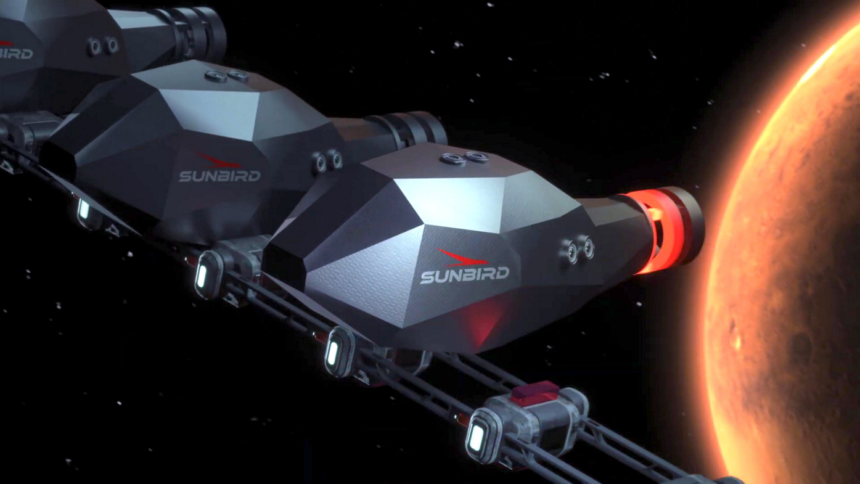A team of British scientists from the company Pulsar Fusion presented this week the conceptual design of a spacecraft that promises to reach Mars in half the time of the current missions planned by SpaceX, Elon Musk’s aerospace company.
The project, called Sunbird, consists of a nuclear fusion-powered rocket capable of reaching speeds of up to 500,000 kilometres per hour.
While upcoming missions to the red planet are estimated to take seven to eight months with the Starship, Sunbird promises to make the trip in just four months or even less, thanks to its innovative direct nuclear fusion engine.
According to the company, this engine uses extremely hot plasma enclosed in a magnetic field to generate powerful, continuous thrust, without relying on gravitational manoeuvers to accelerate the craft.
The engine’s design is based on the fusion of helium-3, an isotope that, when fused, releases protons that are expelled at high acceleration. This process generates the thrust necessary to reach speeds unprecedented in the history of space propulsion.
Unlike Earth-based nuclear reactors that aim to generate electricity, Sunbird’s engine directly converts fusion energy into thrust to propel the craft.
This is the Sunbird Project to Travel to Mars in Record time
The Sunbird project, developed by British startup Pulsar Fusion with support from the UK Space Agency, is an innovative nuclear-powered fusion-based rocket that promises to revolutionise space travel by halving the time it takes to reach Mars.
The rocket, which cost $70 million, is about 30 meters long and has a reinforced structure to protect it from cosmic radiation and micrometeorites.

Additionally, it is designed to dock with other orbiting spacecraft and provide them with additional thrust through fusion propulsion, potentially accelerating multiple missions in the solar system.
When will the Sunbird Rocket Launch?
Pulsar Fusion clarifies on its website that it plans to begin in-orbit testing of its dual direct fusion engine in late 2025, with the expectation that the technology could be fully operational by 2027.
If successful, NASA and Elon Musk will have to rethink their Mars mission schedules, as Pulsar Fusion technology could set a new standard in the space race.
The ability to reach Mars in half the time would not only accelerate colonization and scientific experimentation plans, but would also reduce risks to crews and enable more ambitious missions to even more distant destinations.





